 Rows grow in large groups, forming long rows, for which they got their name. Mushrooms, depending on the species, can be edible, conditionally edible and poisonous. Most of the rows have an unpleasant mealy smell and a bitter taste. However, the tiger or leopard row, which will be discussed in this article, being considered a poisonous species, has a pleasant aroma and taste.
Rows grow in large groups, forming long rows, for which they got their name. Mushrooms, depending on the species, can be edible, conditionally edible and poisonous. Most of the rows have an unpleasant mealy smell and a bitter taste. However, the tiger or leopard row, which will be discussed in this article, being considered a poisonous species, has a pleasant aroma and taste.
Tiger mushrooms are distributed throughout Our Country in the temperate zone of the Northern Hemisphere. Fruiting usually begins at the end of the summer months and continues until the first frost. It is worth noting that many edible types of mushroom pickers are easily confused with the tiger row, which is a rather toxic mushroom. Before collecting these mushrooms in their basket, lovers of “silent hunting” must accurately distinguish the poisonous tiger row, the photo of which is attached below, from its harmless relatives, so as not to accidentally end up in the hospital.
For a better memorization of the appearance and features of the tiger row, check out the photo and description of this fruiting body.
[ »wp-content/plugins/include-me/ya1-h2.php»]
Ryadovka tiger: photo and description of the mushroom
[ »»]
Latin name: Tricholoma pardinum.
Sort by: Tricholoma.
Family: Ordinary.
Synonyms: leopard rowing, poisonous rowing.
Hat: the diameter is from 4 to 10 cm, sometimes up to 12 cm. In young specimens, the shape of the cap is spherical, becoming more convex with age, while in old specimens it is completely prostrate, with thin edges twisted down, the entire surface of the cap cracks. The color range varies from off-white to silver-bluish. The surface of the cap is dotted with flakes of scales that diverge in circles along it. A photo of a tiger or leopard row will help to more clearly present the differences and similarities of the fungus with other species.
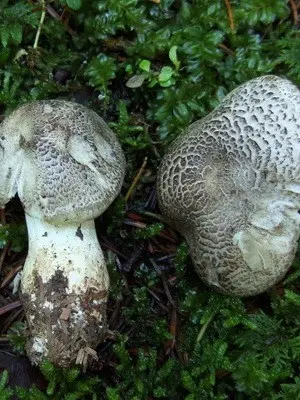
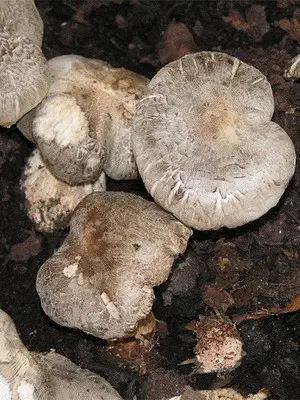
Leg: height can vary from 3,5 to 10 or 12 cm, diameter from 2 to 4 cm, cylindrical in shape, with some thickening at the root. The photo of the tiger row shows that young specimens of the fungus have a fibrous surface, which becomes almost smooth with age. The color varies from reddish brown to light powdery, with light tones closer to the center.

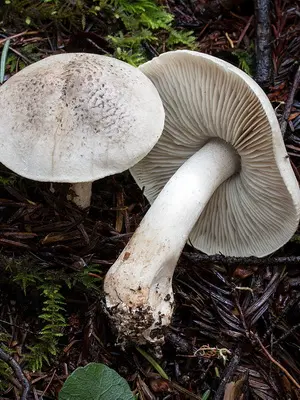
Pulp: white with a grayish tint, gray under the skin, and yellow at the base of the fungus. It has no bitterness, the color does not change when broken. The smell is almost always pleasant, less often – deceptive flour.
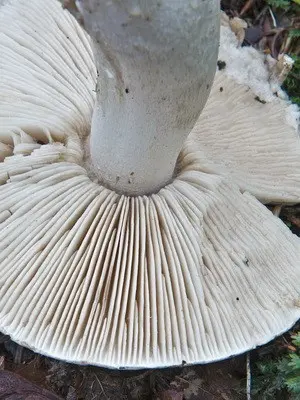
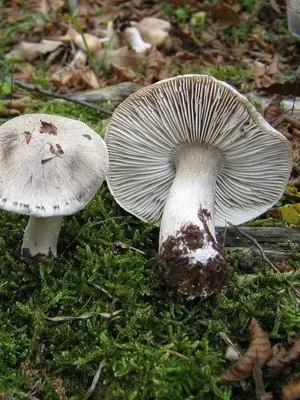
Records: frequent, adhering to the stem with teeth, 0,8 to 1,2 mm wide. Young specimens have a whitish tint to the plates, sometimes they can be slightly yellowish. A photo of the tiger row mushroom clearly shows that the plates constantly emit watery drops.
[ »wp-content/plugins/include-me/goog-left.php»]
Edibility: tiger rowing is a poisonous mushroom, even in small quantities its toxins cause intestinal disorders. Due to the pleasant aroma and taste, the mushroom is not associated with poisonous species of rows. These features can encourage the mushroom picker to put the fruiting body in his basket, and then cook it. Signs of gastrointestinal poisoning appear at least 20 minutes, maximum 2 hours after eating mushrooms. The following symptoms are observed: nausea, vomiting, diarrhea, profuse salivation, weakness, sharp pains in the abdomen, headache and fever. When the first signs appear, it is urgent to call an ambulance.
Similarities and differences: the poisonous tiger row is very similar to the edible gray row in appearance. However, the main difference is the presence of scales on the cap of a poisonous mushroom.
The edible earthy-gray row is also similar to the tiger row. However, she has a brittle hat with a diameter of up to 7 cm, gray. The leg is almost white in color, does not have a skirt ring.
Spread: leopard or tiger rows grow in the temperate climatic zone of Our Country. Usually they prefer to grow in small colonies, forming “witch rings”, they are less common singly. Fruiting bodies form a symbiosis with coniferous trees, sometimes found in mixed and deciduous forests on sandy soils covered with moss. Particular preference is given to pines, spruces, less often beeches, oaks and lindens. Begins fruiting in August and ends in mid-October. Under favorable weather conditions, growth can last until the end of October-beginning of November. The tiger row can often be found in parks, gardens, fields and meadows.
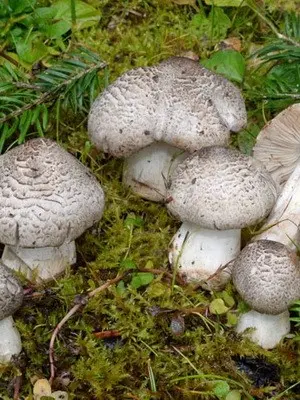
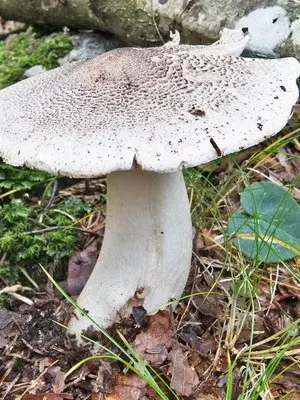
Fans of “quiet hunting” should definitely use the description and photos of tiger row mushrooms, which clearly show their fruiting in natural conditions, as well as their appearance. Having the necessary information in your arsenal, you can correctly distinguish edible representatives from poisonous ones. However, never forget the main thing: if you are not sure about the found fruiting body, leave the idea to take it into a basket!









